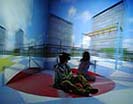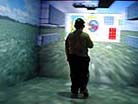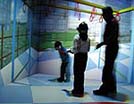The basic objective of this research is to investigate user interaction in virtual environments (VEs). Specifically, the main research question of this study examines the effect that interactivity, as one of the essential properties of computer-based learning environments, may have in the formation of children's conceptual learning.
|
| |
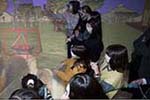 |
Research context and motivation
Virtual Reality (VR), regarded here as the three-dimensional multi-sensory immersive and interactive digital environment, has triggered public imagination as the dominant technological metaphor for the way our work, education, and leisure may be delivered in the future. While VR has yet to become a widespread technology, there has, in fact, been a proliferation of VR installations (in the form of exhibits) and applications (in the form of “experiences”) available to and accessible by the public.
|
 |
The entertainment market is usually the first to embrace current technological achievements to attract and motivate visitors. Other public settings, such as museums and informal educational institutions, are generally known to be hesitant in adopting cutting-edge digital technologies. However, even these are now considering various forms of VR as a means to attract and motivate visitors but also in an attempt to deliver their educational agenda more effectively [5]. Considering the plethoric development of interactive systems at large, it may not be long before VR installations and applications make their way into the schools and the home. |
| |
|
Does interactivity enable learners to construct meaning?
For virtual environments, the techniques for developing interactivity, regarded as 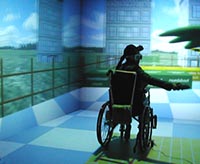 the process with which users can act upon and even modify a virtual world, are relatively unexplored. Yet, interactivity is being promoted widely, not only for its recreational potential but also for its significance for learning. This is even more prominent in the case of VR, since interactivity is largely regarded as one of the medium’s essential properties. The immediate implication which can be drawn from studying related literature is the common belief that a virtual learning environment is more effective if it is interactive. However, little systematic research is available to provide evidence that interactive learning environments in VR can bring “added value” to learning, especially in children. Furthermore, it is not certain if interactivity alone, as an essential property of the virtual reality medium, can provide a strong effect upon learning. Most research in VR is focused on the immersive properties of the medium (for example, the sense of presence). Similarly, previous research into the use of VR in education has concentrated on training applications rather than conceptual learning. the process with which users can act upon and even modify a virtual world, are relatively unexplored. Yet, interactivity is being promoted widely, not only for its recreational potential but also for its significance for learning. This is even more prominent in the case of VR, since interactivity is largely regarded as one of the medium’s essential properties. The immediate implication which can be drawn from studying related literature is the common belief that a virtual learning environment is more effective if it is interactive. However, little systematic research is available to provide evidence that interactive learning environments in VR can bring “added value” to learning, especially in children. Furthermore, it is not certain if interactivity alone, as an essential property of the virtual reality medium, can provide a strong effect upon learning. Most research in VR is focused on the immersive properties of the medium (for example, the sense of presence). Similarly, previous research into the use of VR in education has concentrated on training applications rather than conceptual learning. |
| |
A conceptual learning problem represented in VR
 In order to examine interactivity and exploit the capabilities of the VR medium in visualizing abstract and difficult conceptual learning problems and providing feedback, we chose the learning domain of fractions. We created an experimental VE in which children are asked to complete constructivist tasks that are designed as mathematical fraction problems. Fractions were chosen as the learning topic due to the difficulty that primary school students have in understanding and connecting them to real-world situations. In other words, fractions lend themselves to designing learning tasks that are, at the same time, conceptually difficult, abstract enough to justify representation via a VR simulation of a real-world situation, and can allow for a kind of varied and incremental interactive treatment.
We used this environment to evaluate our hypotheses about interactivity. In order to examine interactivity and exploit the capabilities of the VR medium in visualizing abstract and difficult conceptual learning problems and providing feedback, we chose the learning domain of fractions. We created an experimental VE in which children are asked to complete constructivist tasks that are designed as mathematical fraction problems. Fractions were chosen as the learning topic due to the difficulty that primary school students have in understanding and connecting them to real-world situations. In other words, fractions lend themselves to designing learning tasks that are, at the same time, conceptually difficult, abstract enough to justify representation via a VR simulation of a real-world situation, and can allow for a kind of varied and incremental interactive treatment.
We used this environment to evaluate our hypotheses about interactivity. |
| |
 see also Publications see also Publications |
|
| |
next: the virtual environment 
|
|

